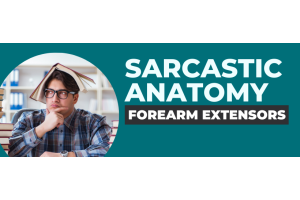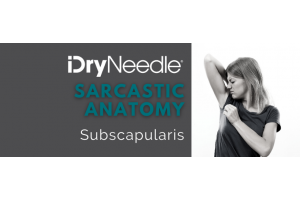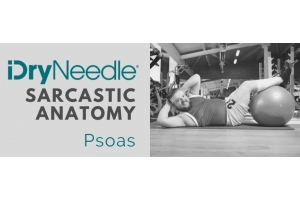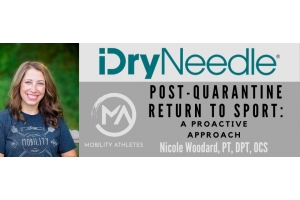
Weren’t we supposed to have hoverboards in 2015? If we can learn anything from the 1985 versus the 2015 Marty McFly, it’s that the future is tough to predict. At least without 1.21 giggawatts. But that’s exactly what I intend to do with regards to the future of dry needling in the US.
Dry needling has come a long way in the past few years, but where is it headed? Understandably a premature question as some states have yet to formally ratify dry needling practice by physical therapists; but with over 35 states allowing it, FSBPT (Federation of State Boards of Physical Therapy) and APTA (American Physical Therapy Association) endorsement, and exponential growth in terms of clinician and patient recognition – what’s next? I first assert there are far more qualified individuals to postulate (or prophesy) the course of dry needling, but here are 5 trajectories I see dry needling taking in future years.
- Dry needling will be an entry level DPT skill. {gasps from the crowd} I am not even necessarily saying this is good, bad, or otherwise; but with growing interest from DPT students (and even prospective students), it will most certainly be a topic of consideration for DPT programs. Honestly, it will only take one establishment to incorporate dry needling into their doctorate program for others to quickly follow suit. A valid point would be that anatomical knowledge-base is debatably best immediately following graduation. Counterpoint – new grads potentially lack the clinical reasoning on when, where, and why to implement dry needling, which comes with experience for any treatment technique.
- More physicians will implement dry needling. Sounds like an obvious statement as some specialized pain and ortho physicians already use dry needling, but I’m imaging a world where physicians will widely use dry needling as a precursor or alternative to pharmaceuticals and injections. A more naturopathic versus pharmaceutical model, if you will. I see this coming as a product of an upward trend in consumers requesting care alternatives and also the hopeful downward trend of over-prescribed medication for musculoskeletal pain in the US.
- Dry needling will be used with neuro and oncology patient populations. Dry needling is appreciated as one of the more effective myofascial modalities for orthopedic conditions, but currently contraindicated for many other diagnoses primarily due to lacking clinical research. I see this changing. As we learn more about the biochemical, vasomotor, lymphatic and neuromuscular effects of dry needling, we know we can affect the CNS, somatosensory cortex, muscle patterns, and the peripheral constructs of other systems directly with a needle and electrical stimulation. To be sure – this is not an endorsement to go “maverick” on our traditional precautions and contraindications, but I see clinical research delving deeper into these subpopulations. Think CP, Parkinson’s, SCI, TBI, lymphedema and oncology.
- Medicare will reimburse for dry needling. “When you wish upon a star, it makes no difference who you are; anything your heart desires, will come true”. I know, I know. But sincerely, the recognition of Medicare for PTs implementing dry needling will likely be the domino needed to cascade third-party reimbursement. They’d be silly not to with a likely decrease in visits per episode of care resulting. And guess what? When insurance covers it, patients will utilize it. Then we can complain about the poor reimbursement we get for it.
- Dry needling-specific products will boom. This isn’t even an advertisement for Myotech Dry Needles {insert chime}, but with an exponentially growing market and the need to differentiate dry needling from acupuncture; industry-specific products will result. Especially considering the archaic electrical stim units and some of the cringe-worthy needle brands available today. Physical therapists are concerned too much with quality and patient experience for this evolution not to occur.
Before we bring the focus back to the future (see what I did there) of dry needling, I think it’s worth applauding the efforts of the many who have elevated dry needling to what it is today. Groups and individuals like the APTA, the FSBPT task force, the state associations who have worked to approve dry needling, the passionate clinicians in each city and state promoting its use, the visionary educators of the dry needling cirricula in the US, and the patients who have advocated for their own care. It takes a village. And it is because of this hard work we can look forward to decades and generations of better serving our patients using dry needling.
Your turn, folks. Here is your call to action. You have 3 choices –
#1 – There are still some states working to formally allow dry needling in PT practice. Please support specific causes like the North Carolina PT Association, PTWA (Washington State) or become more active in your own state association.
#2 – If you are a patient or clinician utilizing dry needling, share this post or create your own. This could be a “how dry needling helped me” post or a simple “thanks” to someone who has helped you in regards to needling.
#3 – Watch Back to the Future. Probably the least productive option, but I don’t think you’ll be disappointed.
Thanks for reading and feel free to ask questions, comment or follow us on Instagram, Facebook and Twitter (@DPTwithneedles)!
Paul Killoren PT, DPT









